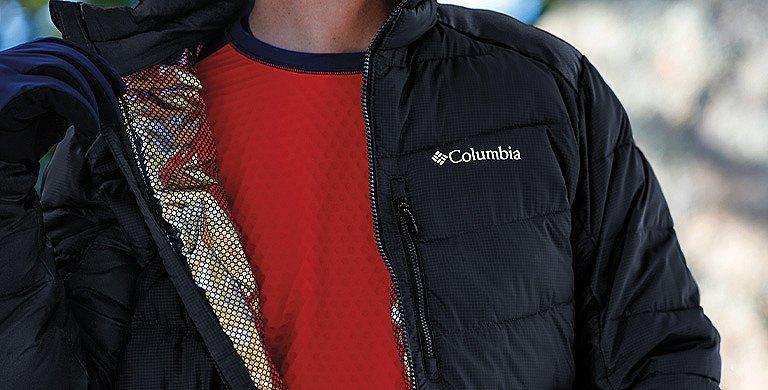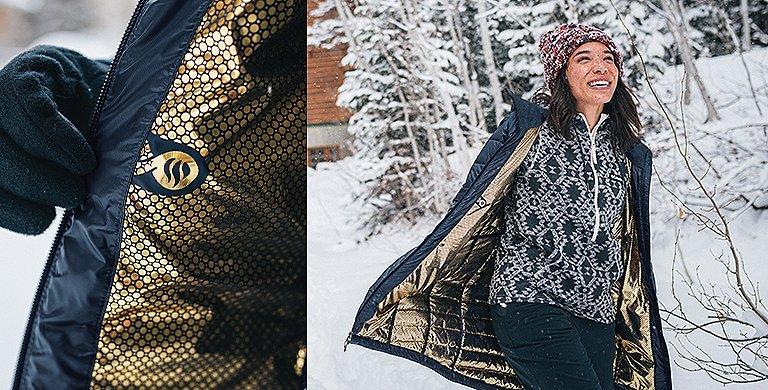TECHNOLOGY
What Does ‘Breathability’ Mean in Outdoor Clothes?
We asked a Columbia Sportswear fabric engineer to explain what breathability is—and why it matters
BY RACHEL CAVANAUGH
Whether you’re hiking, skiing, camping, or trail running, if you’ve ever shopped for outdoor gear before, you’ve probably heard the term “breathability.” But what exactly does this word mean? And why is it so important when it comes to outdoor recreation, especially for waterproof clothes? To help you understand, we reached out to Dr. Haskell Beckham, senior director of innovation for Columbia Sportswear. The fabric expert explains below what breathability is, how it works, and why it matters.
What does ‘breathability’ mean?
First of all, what is “breathability”? According to Beckham, when it comes to clothing and apparel, breathability is the degree to which a fabric allows moisture vapor to be transported through it. Breathable fabrics become even more important for comfort once you start sweating, whether it’s fabric from clothing, shoes, or other types of apparel. This can be difficult to achieve for waterproof apparel which is why outdoor gear that manages to combine breathability and water-resistance is so coveted.
Why is breathability important?
So why is this so important? What is the purpose of breathability? Aside from being more comfortable without pools of sweat trapped against your skin, clothing breathability is also a practical thing. After all, the whole reason you sweat in the first place is to keep your body cool by evaporating, so when sweat gets trapped, it can’t do its job.
“Evaporative cooling is the body’s natural mechanism of cooling,” Beckham explained. “This is necessary for comfort because it balances the heat generated by metabolism and activity. Anything that impedes evaporation of moisture from the skin, such as fabrics with low or no breathability, can impede cooling.”
In addition to the cooling factor, wearing non-breathable clothing can lead to odor problems. If your gear can’t breathe, it can start to stink, especially if you’re participating in cardio-based activities like hiking or trail running. When it comes to waterproof apparel, look for options like OutDry or other similar technologies—these block the rain from coming in while still letting the moisture from sweat out.
“Evaporative cooling is the body’s natural mechanism of cooling,” Beckham explained. “This is necessary for comfort because it balances the heat generated by metabolism and activity. Anything that impedes evaporation of moisture from the skin, such as fabrics with low or no breathability, can impede cooling.”
In addition to the cooling factor, wearing non-breathable clothing can lead to odor problems. If your gear can’t breathe, it can start to stink, especially if you’re participating in cardio-based activities like hiking or trail running. When it comes to waterproof apparel, look for options like OutDry or other similar technologies—these block the rain from coming in while still letting the moisture from sweat out.
What are the most breathable fabrics?
According to Beckham, the most breathable fabrics are those that allow moisture vapor to pass through easily. Some of the best fabrics for outdoor apparel include cotton, nylon, and polyester. For options that are also waterproof, patented high-tech fabrics are typically the best bet, such as:
To Learn more about the OutDry Extreme technology watch the video below or check out our OutDry Extreme technology guide.
- OutDry: Often used in shoes, boots, and gloves, this is a highly breathable material that’s also waterproof. It’s great for things like hiking boots, gloves, and outdoor accessories.
- OutDry Extreme (ODX): Designed for ultra-wet, rainy climates, this is an extra waterproof fabric that features a breathable membrane on the outside, giving it ultra-performance capabilities. Some of the best raincoats feature ODX fabric.
To Learn more about the OutDry Extreme technology watch the video below or check out our OutDry Extreme technology guide.
When should I wear breathable clothing?
Breathable clothing is always a good choice for outdoor apparel, but it’s especially important for waterproof apparel, or when you’re participating in activities that get your heart rate up such as hiking, trail running, and cycling. Keep in mind, too, that it doesn’t matter if you’re in a warm or cold climate. People often mistakenly believe that breathable gear only applies to warm environments, but you can get hot and sweaty doing things like skiing or snowshoeing too. So make sure your winter gear is breathable as well—and that includes your jacket, hat, gloves, boots, and baselayers.
Need some breathable outdoor gear? Check Columbia Sportswear’s selection.



